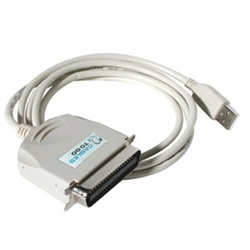
I should say that none of these natively provide the FireWire 400 connection I need: To further complicate issues, I wanted the flexibility of being able to use the scanner with anywhere up to five computers with connectors introduced some 20 years apart (ranging from 1996’s USB A to 2015’s Thunderbolt 3). New laptop on the left with Thunderbolt 3 and 18 year old Nikon 4000 ED scanner on the right with FireWire 400… Like any reasonably sane person, I had done my research, however, the question if the daisy chain of up to four cables and adapters would actually work remained. All this adds up to headaches for users who are not locked into yearly/bi-yearly upgrade cycles and when connectors go from simply being superseded to eventually being labelled “legacy”, well…God help you.įor some context, I recently decided to take the leap and get a dedicated scanner for 35mm film: a Nikon SUPER COOLSCAN 4000 ED to be exact. There’s a new “gold standard” connector to contend with every few years or so, from SCSI to FireWire to USB, DisplayPort and Thunderbolt…and there are no signs of it stopping. Still and motion picture film formats are positively glacial in their rate of change when compared to the innumerable options that have come and gone for connecting scanners, printers and other devices to computers over the past four decades.

4.4 Nikon LS-4000 (FireWire 400 to Thunderbolt 3).4.3 Nikon LS-4000 (FireWire 400 to Thunderbolt 2).4.2 Nikon LS-4000 (FireWire 400 to Mini DisplayPort).3.3.1 Thunderbolt 1 or Thunderbolt 2 device to Thunderbolt 3 port.3.2.1 Parallel device to USB Type-A port.3.1.7 FireWire 800 device to Thunderbolt 3 port.3.1.6 FireWire 800 device to Thunderbolt 1 or Thunderbolt 2 port.3.1.5 FireWire 400 device to USB-C port.3.1.4 FireWire 400 device to USB Type-A port.


3.1.1 FireWire 400 device to FireWire 800 port.2.4 Thunderbolt 1 and 2, Mini DisplayPort.Unclick Enable Bidirectional Printing or any of the other 4 choices in the list at the bottomġ2. Go to devices and printers and double click on you BJC-80ġ1.

Click on the Canon BJC-80 when it does.ĩ. It will probably be quite some time before the Canon BJC-80 shows up.ħ. When you get to the selection of the printer, if the Canon BJC-80 is not there, click on Windows Update. There may be one or more depending upon whether you have used your USB to Parallel Port cable for another printerĦ. For Port, scroll down and pick the last Virtual Printer Port for USB. Delete any other instances of your attempted installs of the printer if you have anyĥ. Plug your USB to parallel cable into your printer but don't turn on the printer.Ģ. Canon BJC-80 With Windows 7 and USB to Parallel Cableġ.


 0 kommentar(er)
0 kommentar(er)
